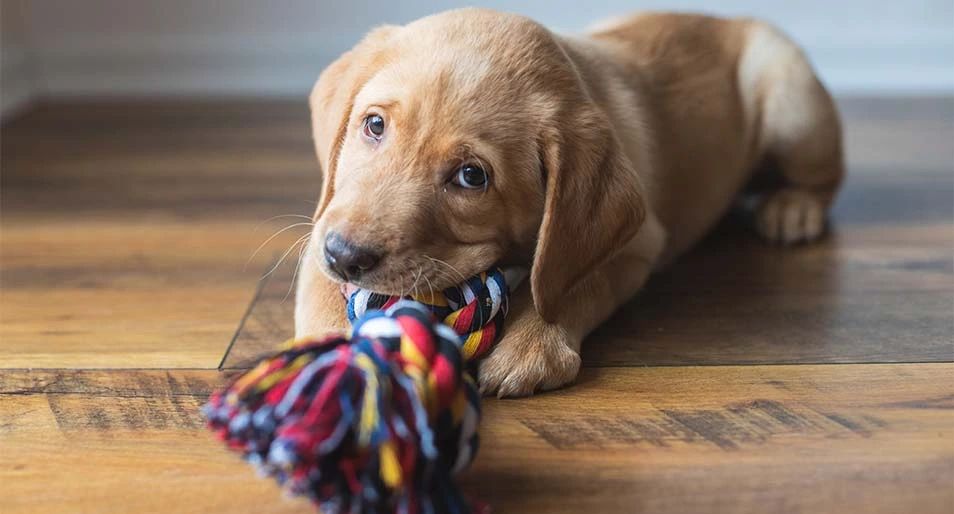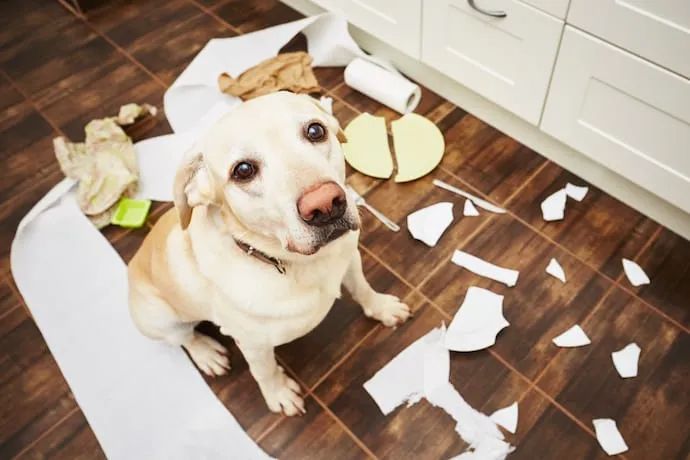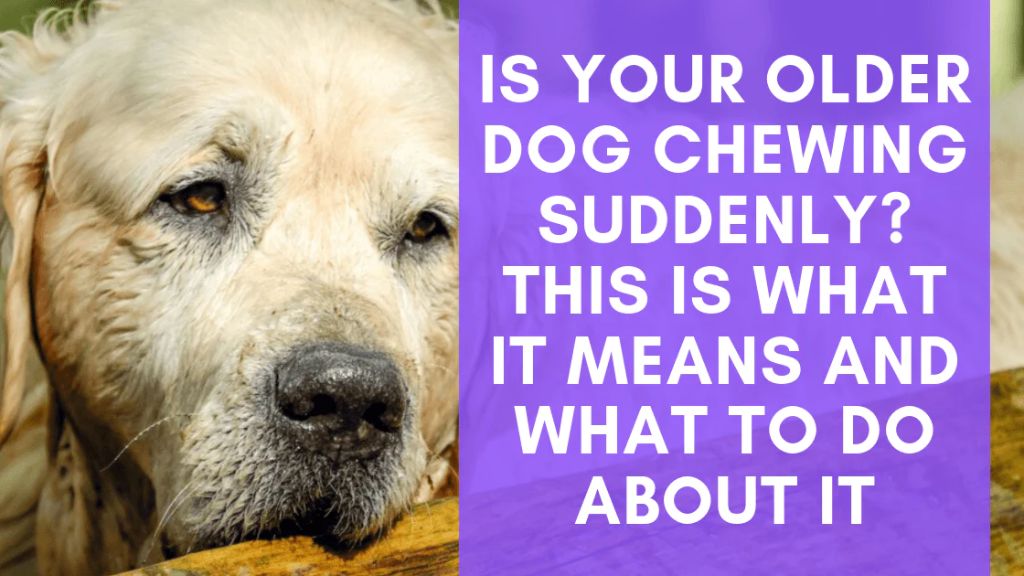Introduction
Chewing is a normal and natural behavior for dogs of all ages. There are several distinct stages of chewing that puppies and dogs go through from puppyhood to adulthood. Chewing serves many purposes for dogs – it helps relieve pain and discomfort during teething, eases boredom and anxiety, and provides mental stimulation.
Puppies go through an aggressive chewing phase while teething which lasts until around 5-8 months of age. They then enter an adolescent phase from 6-18 months where chewing is still common but less frequent. Adult dogs generally chew far less but some continue to chew excessively into adulthood if not properly trained. Understanding the timeline of chewing behaviors can help owners curb destructive chewing and meet their dog’s needs through each stage of development.
Puppy Teething
Puppies begin teething around 3 months old when their deciduous (baby) teeth start emerging. The teething phase lasts until the puppy is about 6 months old. According to the AKC, puppies have 28 deciduous teeth and begin losing them around 4 months old to make way for 42 adult teeth. The entire teething process can take up to 8 months from start to finish (AKC).

During teething, chewing and mouthing behaviors increase as the teeth push through the gums, which can be sore and itchy. Providing safe and appropriate chew toys helps relieve puppy discomfort during this stage. Puppies may chew and gnaw more as the deciduous teeth loosen and fall out. By around 6 months of age, all of the permanent adult teeth should be fully erupted and in place (VCA Animal Hospitals).
Adolescent Chewing
Dogs between 6 to 18 months go through a stage known as “adolescent chewing” or “exploratory chewing” (see https://www.bluecross.org.uk/advice/dog/behaviour-and-training/how-to-control-your-dogs-chewing). During this time, puppies transition from puppyhood to adulthood and deal with changing hormones and behaviors.
Adolescent dogs have urges to chew more frequently when they are bored, understimulated, stressed, or overexcited (https://www.limitlesspawsibilities.com/Training-Tips/Entries/2021/7/adolescent-dog-chewing.html). They may chew on furniture, shoes, leashes, plants, drywall, doors, and more. Unlike puppy teething, adolescent chewing is not driven by pain or sore gums. Instead, chewing provides an outlet for stress and satisfies natural canine instincts.

Providing plenty of exercise, mental stimulation, and appropriate chew toys can help curb destructive chewing behaviors. However, some adolescent dogs may need additional training and management during this chewing phase.
Adult Chewing
Adult dogs will chew for a variety of reasons including stress relief, boredom, or simply for enjoyment. Chewing is a natural behavior for dogs that provides mental stimulation. According to the ASPCA, “Chewing is normal for all dogs, but especially puppies. Puppies explore the world through their mouths and soothe sore gums by chewing.”
Some adult dogs may engage in destructive chewing when stressed or anxious. Chewing provides comfort and releases endorphins that make dogs feel calm and relaxed. Providing plenty of toys and activities can help prevent boredom and destructive chewing behaviors in adult dogs.
According to the Humane Society, “Adult dogs may engage in destructive chewing for any number of reasons, including as a coping strategy for stress and boredom.” They recommend providing interactive toys and treats to keep adult dogs engaged and mentally stimulated.
Chewing Tendencies by Breed
Some dog breeds are more prone to excessive chewing than others due to genetic factors. According to Tasty Bone, breeds that tend to chew more include retrievers like Labs, high-energy herding breeds like Collies, terriers like Jack Russells, and toy breeds like Chihuahuas. Labrador Retrievers in particular are bred as retrieving dogs so they are used to having things in their mouths. Pets Radar ranks the top chewing breeds as Boxers, Labs, Labradoodles, Jack Russells, Beagles, Border Collies, Chihuahuas, Australian Shepherds, German Shorthaired Pointers, and Vizslas.
On the other hand, some breeds like Greyhounds tend to chew less. Understanding a breed’s natural tendencies can help set proper expectations for chewing behavior as the dog matures.
Preventing Destructive Chewing
The best way to prevent destructive chewing is to provide your dog with appropriate outlets for their chewing instincts. Make sure your dog has plenty of chew toys that are designed to stand up to strong jaws. Rotate toys to keep them interesting and try different textures like rubber, rope, and tough nylon. Supervise your dog when introducing new chew toys to ensure they don’t swallow pieces that could be a choking hazard.
Getting enough physical and mental exercise will also curb destructive chewing behaviors. Take your dog for daily walks and play fun interactive games with them like fetch or hide and seek. Consider enrolling in obedience training classes, which will mentally stimulate your dog while reinforcing important commands.
When you can’t directly supervise your dog, confine them to an area using baby gates or a crate so they don’t have access to furniture and other tempting items. Providing distraction with chew toys in their confinement area will also be helpful. Correct your dog using a firm “No” if you catch them chewing inappropriate items and redirect them to a designated chew toy instead.
Citations:
[1] “Destructive Chewing.” ASPCA, www.aspca.org/pet-care/dog-care/common-dog-behavior-issues/destructive-chewing. Accessed [date].
[2] “How to Stop Your Dog’s Chewing and Biting Problem.” The Humane Society of the United States, www.humanesociety.org/resources/stop-your-dogs-chewing. Accessed [date].
Curbing Excessive Chewing
Excessive chewing can be curbed through several methods that remove reinforcement for the behavior, provide appropriate alternatives, and make inappropriate chewing less appealing.
It’s important not to reward excessive chewing with attention. Even scolding can be seen as reinforcement. Instead, quietly interrupt the behavior and redirect your dog to an appropriate chew toy. Praise them when they redirect chewing to the toy.
Providing plenty of exercise, playtime, and enrichment activities can also curb excessive chewing by fulfilling your dog’s needs to chew and preventing boredom. Rotating toys keeps them novel and interesting.
Applying bitter, citrus, or pungent-tasting deterrents to inappropriate items makes them unappealing to chew. However, supervision is still needed to prevent possible ingestion. Popular deterrent sprays include bitter apple, bitter lime, and Vick’s VapoRub.

Medical Causes of Chewing
While some chewing behavior is normal, excessive or destructive chewing in adult dogs can also indicate an underlying medical issue. Some potential medical causes for increased chewing include:
Dental Issues: Dogs may chew excessively due to dental pain, abscesses, or other issues in their mouth. Dental disease is common in dogs and can lead to toothaches or gum irritation that causes them to chew for relief. Regular dental exams and cleanings can help identify and treat dental problems.
Anxiety: Dogs that experience separation anxiety or other stressors may turn to chewing as a coping mechanism. The chewing provides distraction and releases endorphins that help relieve anxiety. Working with a vet or trainer to address the underlying cause of anxiety can curb this destructive behavior. Medications may also help in some cases (Purina, 2023).
Other Conditions: Issues like gastrointestinal disorders, allergies, arthritis, or neurological problems can also prompt dogs to chew more frequently. The chewing may be an attempt to alleviate discomfort or pain. Diagnosing and properly treating the medical issue can reduce excessive chewing.
When to Seek Help
If your dog is chewing excessively or destructively to the point where it’s concerning, it’s a good idea to seek help from your veterinarian. Some signs that it may be time to consult your vet include:
Excessive chewing that doesn’t seem to lessen with age – Most puppies and adolescent dogs will naturally want to chew more, but this should taper off by around 18 months of age as mentioned by the Animal Hospital of Clemmons article (https://www.animalhospitalofclemmons.com/site/veterinary-pet-care-blog/2022/03/15/dog-chewing). If your adult dog is still chewing excessively, a vet visit may be warranted.

Destructive chewing that damages property – While puppies may chew on inappropriate items, it’s a concern if an adult dog is destroying household objects, furniture, etc. This may signal anxiety, stress or other issues that need veterinary attention.
Injuries from chewing – Whether it’s injuries to their mouth and gums from chewing, or injuries from chewing and ingesting inedible objects, unusual injuries could point to a chewing compulsion needing medical intervention.
Chewing despite preventative measures – If you’ve tried all the usual recommendations for curbing destructive chewing like providing chew toys, exercise, etc., but your dog still chews to excess, then it’s a good idea to have your vet examine them for potential underlying causes.
A chewing habit that develops suddenly – A sudden change like new destructive chewing behaviors emerging for no clear reason in an adult dog warrants a trip to the vet to identify potential medical issues causing the behavior change.
Conclusion
In summary, dogs go through distinct chewing stages as they grow from puppy to adult. Puppy teething leads to increased chewing from 3-6 months old. Adolescent chewing peaks around 8-10 months old as adult teeth come in. Some dogs continue to chew excessively into adulthood, especially certain breeds like Labradors. While chewing is normal canine behavior, excessive or destructive chewing can be curbed through providing appropriate chew toys, regular exercise, adjusting their environment, and training. If chewing becomes problematic or is accompanied by other symptoms, consult your veterinarian to rule out potential medical causes. With patience and consistency, destructive chewing habits usually resolve over time. The key is redirecting natural chewing urges onto acceptable outlets.